THE OLD MAN ON THE MOUNTAIN The Gospel according to St John seems to some scholars to be the memories of an old man, with the perspective of long life. John outlived all the other Apostles, dying in 98 AD. He must have been about 100 years old. He and his brother, the future Apostle James, started life as fishermen on the Sea of Galilee. They may have been cousins of Jesus. They came to this part of the world after the Crucifixion, when John was entrusted by Jesus with the care of his mother, Mary.
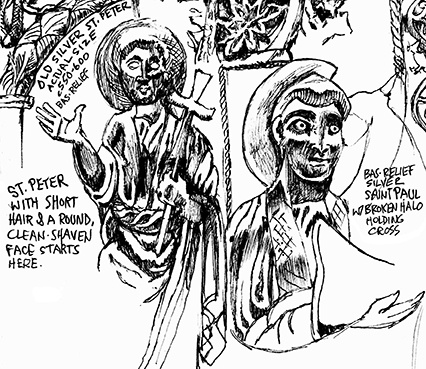
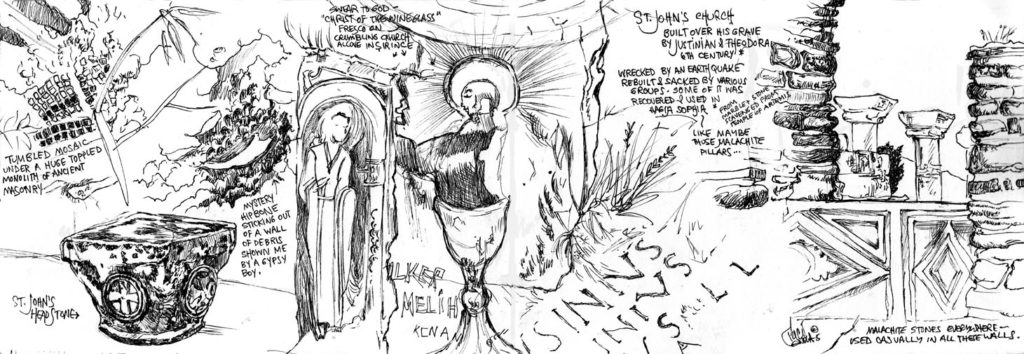
On the edge of the ruined Basilica, overlooking the town of Selçuk, there used to be a sign explaining the legend. I am sorry to say that it has been replaced with less-colorfully spelled signage, for in letters embossed in metal it said:
…and Jesus looking down from the cross asked John to take his mother into his hose.
So Mary joined St John’s household. Sometime between 37 and 48 AD, he and Peter took her with them to Ephesus. She is believed to have settled here, in a hilltop community high in the mountains above the city.
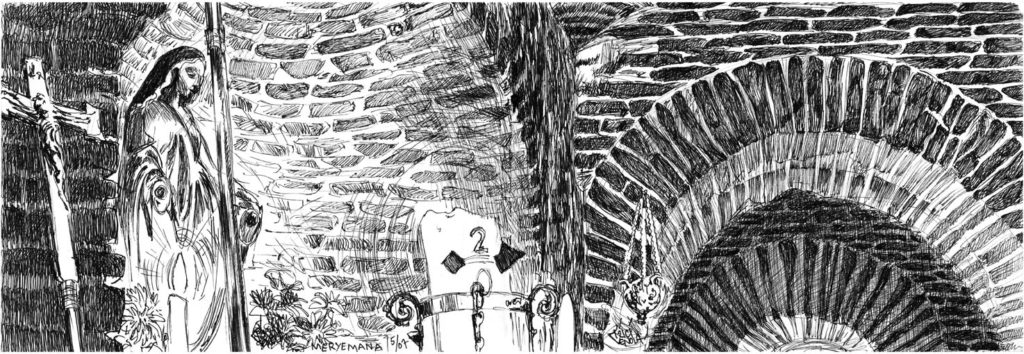
This is Meryemana, generally accepted as Mary’s home and last resting place. Meryemana is a huge attraction. Sister Anne Catherine Emmerich, a stigmatized German nun who dreamed that Mary lived here, was beatified in 2004. Excavations based on her 19th-century dreams revealed the foundation of this house, which corroborated various records including a 4thCentury Ecumenical Council, enough to convince the Pope. Whether you believe Blessed Sister Catherine or not, the collective faith left by millions of pilgrims of all religions is impressive, as attested by these wishes left by the faithful. In dozens of languages, they fill a whole wall. The wishes are left up until they biodegrade, leaving a palpable energy.
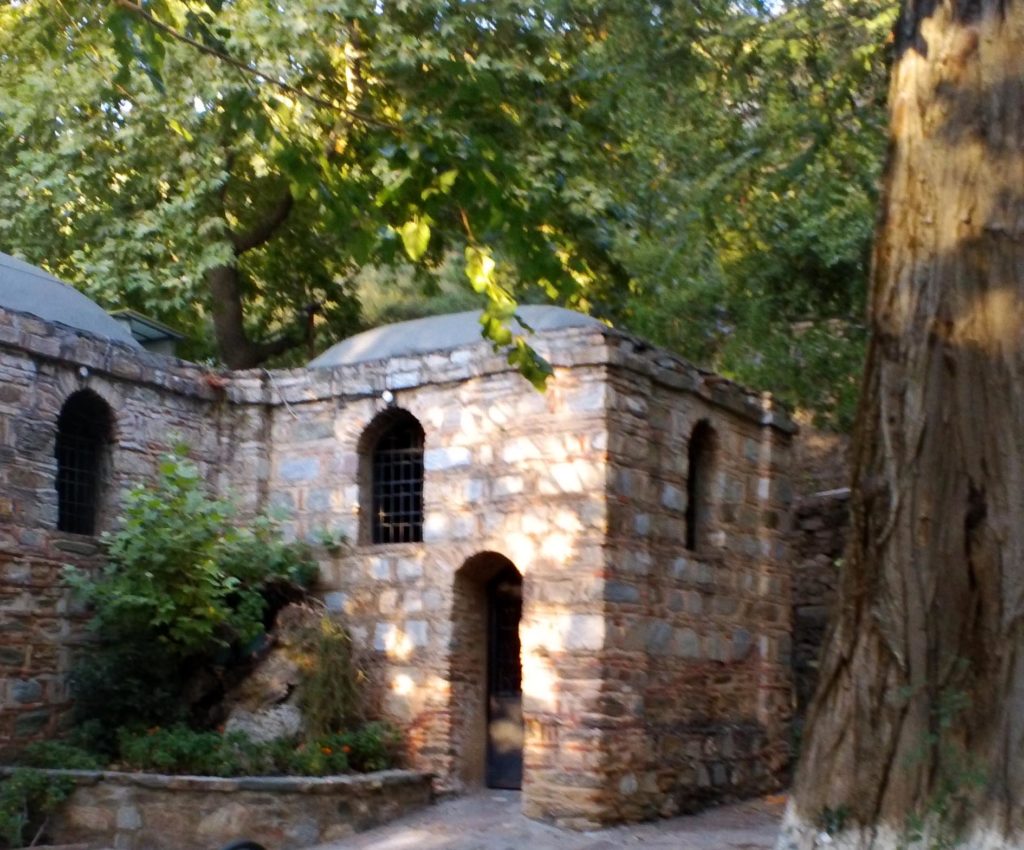
Back in the 1st century, John and Peter set about converting the pagans of Ephesus, with such good results that they were kicked out of the city by the Guild of the Silversmiths, because nobody was buying their little silver Artemis charms anymore. Presumably it took the Guild awhile to catch onto making Mary charms, probably because she hadn’t yet been recognized as a goddess by enough people. Now there’s a roaring trade at the entrance to Meryemana: vials of holy water, little statues, keychains, refrigerator magnets, icon reproductions, postcards, and other tourist effluvia.
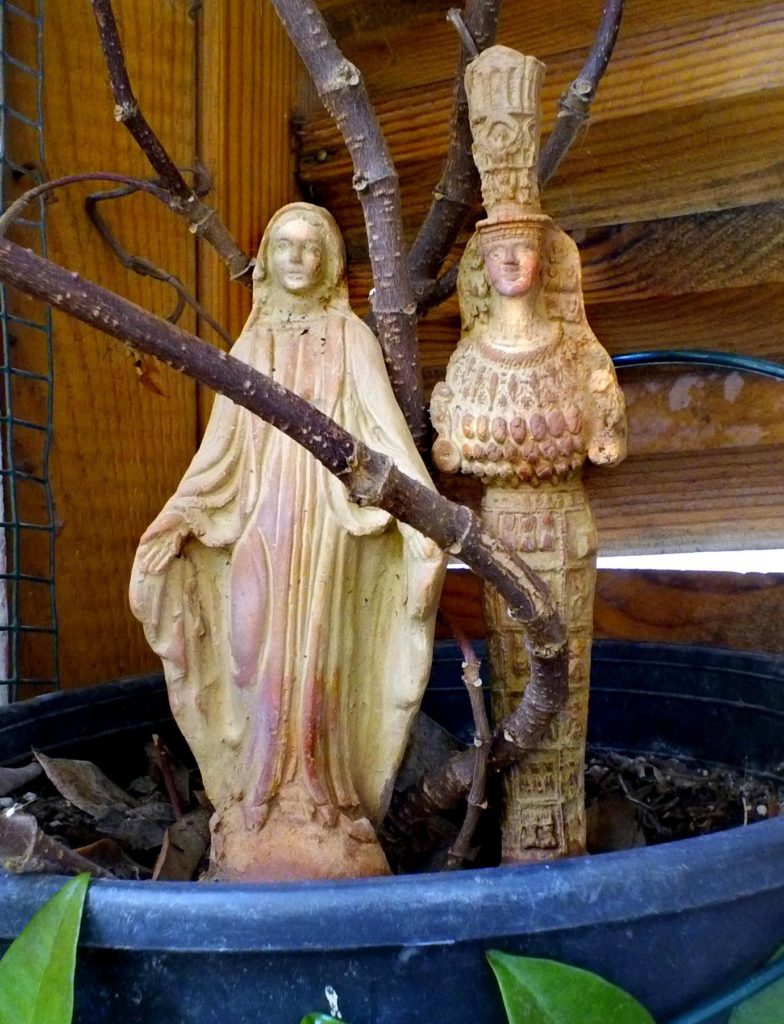

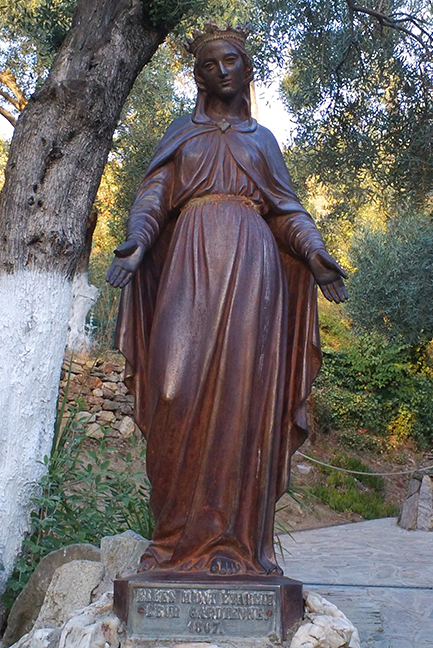
As was mentioned, most sources now recognize what hit me like a thunderbolt in 2005, standing in front of the Great Artemis at Selçuk Museum: Mary is a reincarnation of the ancient goddess, carrying on many of her attributes. By any name, her energy feels divine.